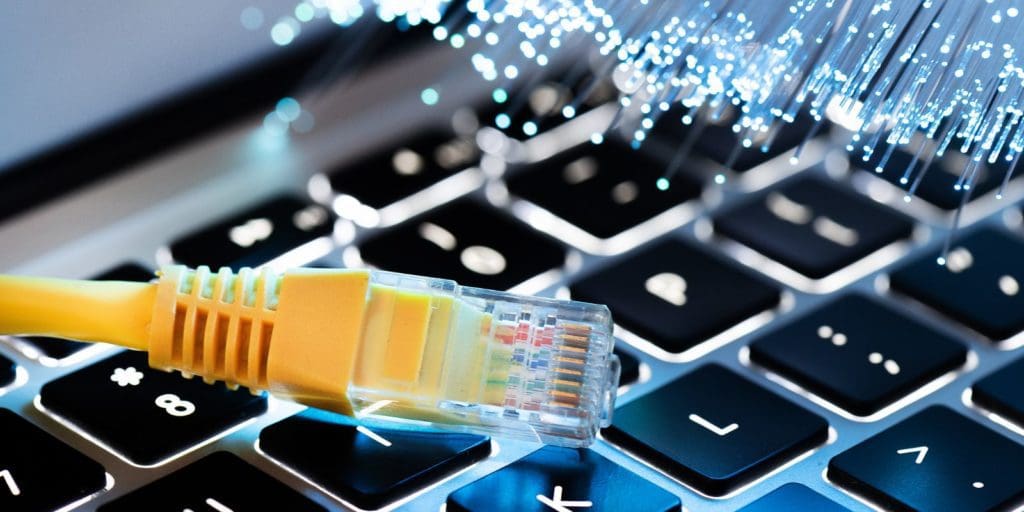Many of us will know that fibre optic broadband is faster, but it’s not easy to find out much more about this fantastic technology. Even though an optical fibre is simply a flexible, thin cable filled with light, its practical applications and uses are impressively wide-ranging.
Through fibre optics, the science of transmitting light, vocals, and data has been transformed into a seamless, refined process. And once you learn about the everyday uses of fibre optics, it’s much easier to see the innovation.
What are fibre optics?
‘Fibre optics’ describes the technologies that transfer information as pulses of light along a glass or plastic fibre cable. Just one cable can contain several glass fibres, with numbers varying from just a few to up to two hundred.
An additional glass layer, called cladding, protects the glass fibre core. An outer buffer tube surrounds the cladding, with one final protective jacket layer for each strand.
- Internet connection
Fibre-optic internet is a great way to increase speeds for those who need it most, providing connection speeds up to twenty times faster than traditional cable connections.
With broadband companies winning multi-million pound contracts to supply fibre-optic connections to remote areas in the UK, the market for delivering fibre-optic internet is certainly competitive.
Fibre cables, unlike typical copper wires, use light signals to send data to and from your computer. These connections are much less likely to be distorted, especially over long distances. This makes them a fantastic alternative in rural communities.
- Décor
Did you know that fibre optics can be a fantastic option for decorative lighting? Most popular around festive and holidays seasons, fibre optics provide a simple, energy efficient and visually appealing solution to big lighting displays. They’re used for Christmas trees, in dramatic art displays, and to showcase exceptional pieces in museums and galleries.
- Cars and transport
Fibre optic cables are easy to work with and conserve space by using superior, more efficient lighting. They’re used in the manufacturing process for many different types of vehicles, playing a crucial role in lighting.
Additionally, fibre optic cables are able to transmit signals between different parts of vehicles at high speeds. As a result, they’re invaluable in vehicle safety features including airbags and traction control.
- Medical technology
Advances in medical technology with fibre optics have opened up a broader range of treatments. For example, fibre optics already allow for far less invasive surgeries, which can be beneficial to both patients and surgeons. In some cases, they can also help to produce clearer X-ray images.
Furthermore, in a move that help up to 150 people each year, the NHS is offering life-changing fibre-optic laser beam surgery to epilepsy patients whose seizures can’t be controlled by medications.
Thinking of changing to fibre optic broadband? Make sure you check with your internet provider first, but there’s no doubt that fibre optic cables will get you the results you need – and faster.

